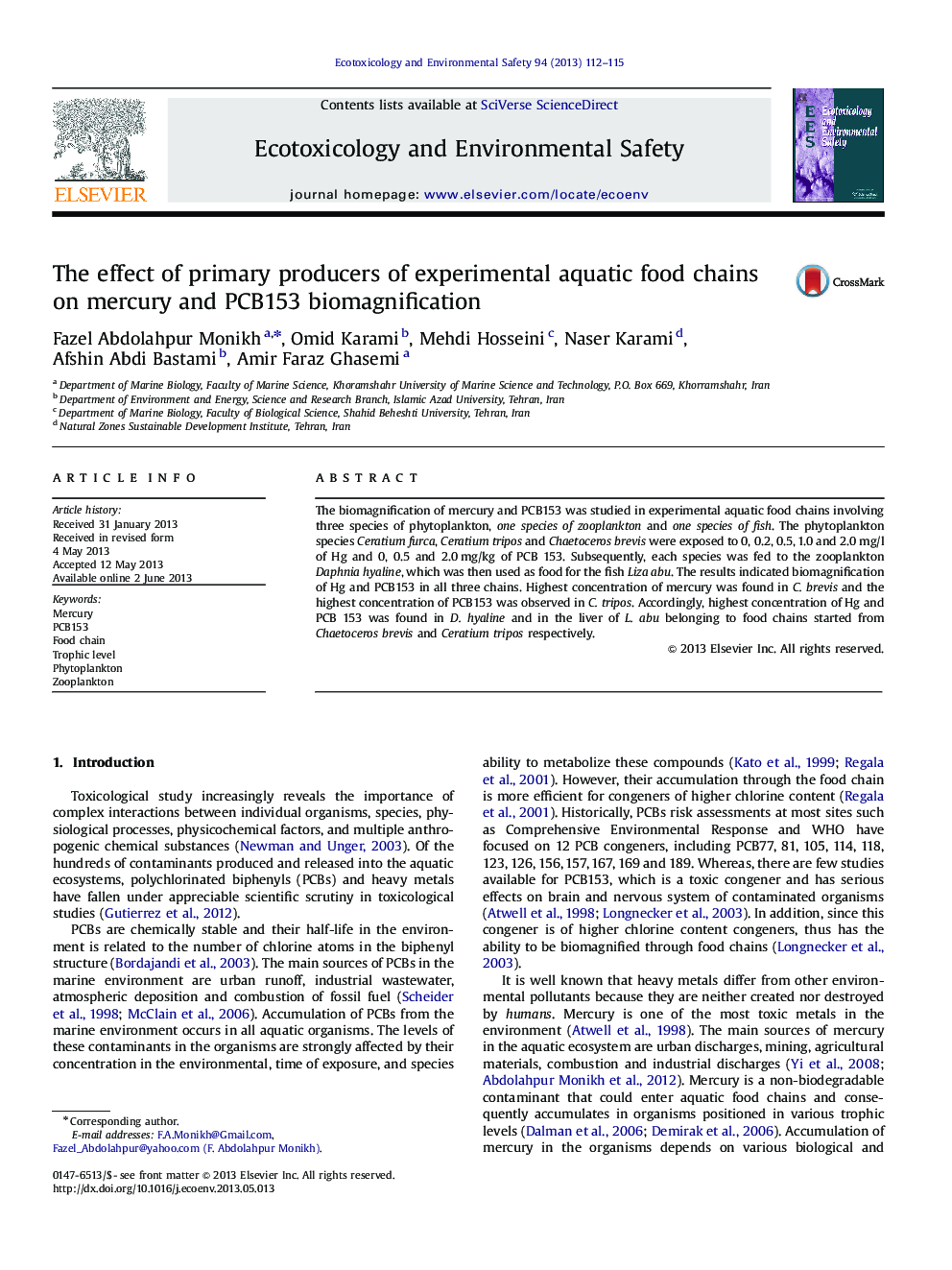| Article ID | Journal | Published Year | Pages | File Type |
|---|---|---|---|---|
| 4420491 | Ecotoxicology and Environmental Safety | 2013 | 4 Pages |
•Mercury and PCB 153 biomagnification in three experimental aquatic food chains were determined.•We found that primary producers can strongly control the levels of contaminants through the chains.•Mercury and PCB 153 can be transferred through aquatic food chains variously.
The biomagnification of mercury and PCB153 was studied in experimental aquatic food chains involving three species of phytoplankton, one species of zooplankton and one species of fish. The phytoplankton species Ceratium furca, Ceratium tripos and Chaetoceros brevis were exposed to 0, 0.2, 0.5, 1.0 and 2.0 mg/l of Hg and 0, 0.5 and 2.0 mg/kg of PCB 153. Subsequently, each species was fed to the zooplankton Daphnia hyaline, which was then used as food for the fish Liza abu. The results indicated biomagnification of Hg and PCB153 in all three chains. Highest concentration of mercury was found in C. brevis and the highest concentration of PCB153 was observed in C. tripos. Accordingly, highest concentration of Hg and PCB 153 was found in D. hyaline and in the liver of L. abu belonging to food chains started from Chaetoceros brevis and Ceratium tripos respectively.
